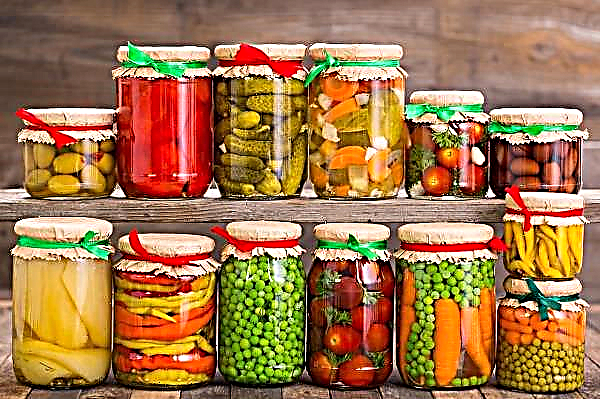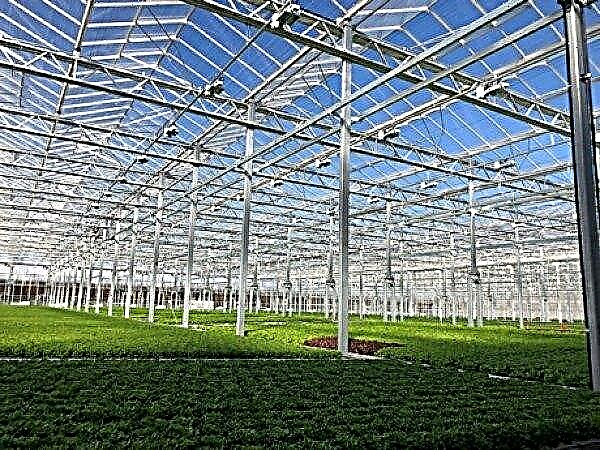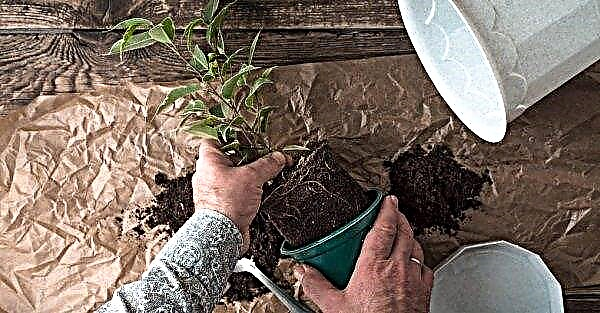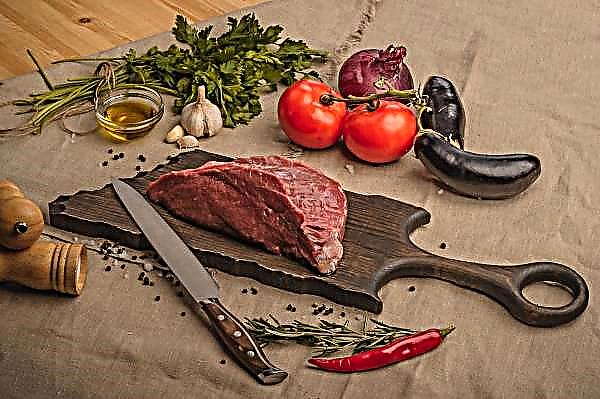Landscaping in a relatively large suburban area is a fascinating occupation, because there is a place not only for the house and small garden, but also for other buildings and decorative areas. A good example of such territories will be objects with an area of 20 acres, but how to properly equip them and at what points to pay attention in the first place - this will be discussed later.
Parameters and characteristics of the site
Without taking into account the main parameters of the acquired site, it will not be possible to achieve the most correct arrangement of objects on it. Important characteristics of such territories include their shape, terrain features, and even soil composition, especially in cases when a large number of plants are planned to be planted as part of the organization of a garden, flower beds, and flower beds.

The shape of the cottage
Ideal option from the point of view of landscape design, there will be sections of classical rectangular or square shapess, because when planning on them it is much easier to mark out individual zones. However, bought 20 acres may turn out to be the “letter G” or even resemble an incorrect, slightly curved oval, and then you will have to smash your head over the selection of the most suitable place for the house, garden area, gazebo and other outbuildings.
Did you know? The concept of "landscape design" first appeared on the territory of Western Europe at the beginning of the twentieth century. In the densely populated cities of Germany, Great Britain and other developed countries, there was simply no room for green decorative zones, so people had to create them artificially, planning planting bushes and trees on a particular site in advance.
Of course, marking up free space and making a detailed plan of the territory, each owner can take into account personal preferences and wishes, but do not forget about some of the recommendations of designers. For example, for a large house, it is worth picking up the lightest and most spacious part of the possessions, but household structures can be “hidden” in a remote and least attractive area.
Relief features
As in the first case, there are their own, most preferred options for the relief of the territories of 20 acres. The most favorable from the point of view of arrangement will be areas with a flat surface, since there are no barriers to zoning or building buildings on them. However, with a large area, this is unlikely, so it is unlikely that the probability of the presence of hills and depressions can be excluded.

If desired, these features can be beautifully emphasized by placing objects in such places that are most suitable for them. So, the elevated zones are perfect for arranging flower beds, and in the lowlands you can organize a decorative pond or plant moisture-loving plants. Residential buildings are usually placed on the most flat parts of the territory, where there are no obstacles to the laying of underground utilities.
Important! In order to avoid mistakes when planning landscape design and to provide all selected crops with optimal conditions for productive growth and development, it is better to take soil samples in advance from different places on the site. Soil features significantly affect the choice of trees, shrubs, and especially flowers.
If, in addition to buildings, a large number of green areas are planned on the site, then, in addition to the relief, the composition of the soil will also have to be taken into account. The poorest and too clay or stony areas can be reserved for buildings, but for the normal development of vegetation, only loose and nutritious substrates are suitable, on which gardens, flower beds and flower beds are organized.
If all the land on 20 acres is approximately the same in composition, then it will be necessary to specifically bring in soil suitable for them in areas with plants. In addition, we must not forget about the requirements for placing a house or other buildings. This in no case should be wetlands with an unstable topography.
Video: Garden Planning Rules
Style selection
The style of the homestead is one of the most important aspects of its assessment, which is why landscape designers always discuss this issue with the owners of the plot. When planning the location of objects on 20 acres, this is also a priority task, because, having chosen a specific style once, you will have to stick to it in the future, even in small things.
In large areas, some parts of which cannot always be captured, there is every chance to “lose track” and start mixing styles, which ultimately will be very noticeable at the end of all planned work.
Did you know? A good example of the landscape design of antiquity can be considered the hanging gardens of Babylon, considered one of the 7 wonders of the world. The first mention of them is found in the "History" of Herodotus, that is, people admired them already in the 400s BC. e.
Of course, in order to preserve the esthetics of the possessions, it is worthwhile to make every effort and not allow this to happen, having pre-selected one of the following ennoblement styles:
- Classical. This option is relevant in any area, however, the greater their value, the less will be the need to save on the size of structures. This style direction provides mainly geometric strict forms and shapes, and when planning zones, maximum orderliness is maintained. The randomness and senseless scattering of landscape design objects in the classical style are unacceptable.

- French. In this case, the cozy atmosphere and pacifying harmony when choosing the main design objects are taken first. Natural, natural materials and vast green areas are in great demand here. Under the sprawling crowns of trees you can install wooden benches or build a French-style gazebo in a suitable place.

- Landscape and landscape. Unlike the previous version, this style is filled with more free, natural forms, highlighting natural beauty in the first place. This means that the site should not be cluttered with buildings, a large number of wide paths and driveways, but green spaces and soft forms of decor, on the contrary, are welcome. Alleys, ponds, parks or even small artificial ponds, with lots of greenery on all sides, will fit perfectly into this style. To emphasize the maximum naturalness of the territory, the soil is sown with a lawn.

- Exotic. This style involves the landing of unusual and rare varieties of cultures, as well as a vibrant color scheme of buildings. On the one hand, this may seem to be the most successful way of arranging the site, but in order to maintain the maximum decorativeness of all plantings, you will have to hire a gardener, because a garden yard with exotic plants requires constant care.
- Alpine. Perfect for designing terrain located on a slope. Usually they are sown with thick grass of medium height, and in some places decorative small flowers of different colors are planted. An artificial lake can become a striking design element with such decoration of the site, but the use of non-natural elements should be minimized.

- Ecological. The key point in this case will be the most complete preservation of the appearance of 20 acres, with the planting of vegetation characteristic of the region (no exotic crops in the middle or especially the northern zone of Russia). When arranging the territory, it is undesirable to use statues or other unnatural elements. Among the advantages of the ecological style is the absence of the need for increased care of the planted vegetation, since all cultures were initially adapted for development in this climatic region.

- "High tech". The free and bold style of designing such an orientation has recently gained more and more popularity, because bright and unusual ideas seem attractive to many owners of personal territories. Characteristic in this case will be the randomness of forms, vivid color solutions, the absence of any orderliness or restraint in the landscape, which distinguishes it from the classical style.

- "Baroque". The main stylistic features of this variety are traditionally attributed to such characteristics as sophistication of luxury, pretentiousness and rich appearance of all objects used to equip the territory. Of course, such style design will hit your pocketbook and will require considerable material costs, so before making a final decision in favor of this option, it’s better to think twice about the appropriateness of expensive materials.

A separate style is to highlight a park or forest one, which is perfect for placing a site near a forest or park territory. Planting near the house of trees and shrubs will contribute to the smooth transition of rarer vegetation into a real dense forest, however, it is better to plant tall tree species, possibly forming alleys from them.
Buildings on the site
Most often, the acquired plots already have certain buildings, so the new owners are faced with the question: to save them or to begin landscape planning after leveling the territory. To answer it, you need to evaluate the functional state of existing buildings and at least roughly calculate which territory you would like to see upon completion of all work.

It is likely that the old buildings can only be demolished in part by choosing the oldest and most dilapidated ones. If some objects are to be repaired and may come in handy in the future, leave them and plan the location of new buildings already taking into account their location. Typically, the following important zones are distinguished on 20 cells.
Living sector
The residential area combines the buildings in which people constantly live. This can be the main large mansion (master's house), separate guest houses (for example, in the style of a chalet), and even dwellings for staff. Of course, the big house of the owners should always come to the fore, and all other smaller buildings can “hide” behind it.
Video: Project on 20 acres of land
Household
The economic zone combines all the buildings of the corresponding purpose. Usually this category includes a bathhouse, a cellar, a barn, houses of a heating and water supply system, as well as storage rooms for storing food or firewood. Sometimes stables or rooms with other animals are added to them, if they are provided for in the initial layout.

Garage
Sometimes a place for a car is a separate building, but much more often it is made an integral part of the house, placing it on the side or behind the building. The specific layout depends on the size of the site, the convenience of the entrance and a number of other, more personal factors. For large boxes, which in combination act as a workplace, it is better to prepare a separate flat area within the economic zone.
For relax
The recreation area (or as it is also called - relaxation) provides for the placement of arbors, ponds, children's slides or even specially designated places for sports within it. In addition to its functional tasks, it should fit into the general style of the site, therefore, the competent arrangement of all these objects requires the most responsible approach to their construction.
Important! Do not "weight" the space with a large accumulation of buildings in one small area. Try to make full use of the available area so that the zones are located at approximately the same distance from each other, sometimes hiding behind trees and other vegetation.
For example, as ponds, you can equip a mini-waterfall, stream or small lake on the territory, supplementing them with wooden elements in the form of a bridge. In this case, the "sports complex" may well become part of the nearby gazebo, with wooden elements when decorating it from the outside.

Landscaping
In order for the acquired 20 acres to look as attractive and organic as possible, one should not skimp on green scenery, trying to plant a variety of types of vegetation. Despite the fact that new seedlings will develop for at least several years, ultimately the land will not look naked and outwardly depleted.
Well, if there are already several trees on the territory, think about how you can use them to give the property even more decorativeness, in particular by planting additional crops in a particular place and taking into account the composition of the soil.
Soil features
Obtaining information about the composition of the soil at the site of the proposed planting of the garden or organizing a flower garden is an important step on the way to obtaining lush green spaces or bright colors of decorative crops. If the earth turns out to be too clayey and very dense, it will be necessary to artificially improve its structure using sand, peat or humus, while on sandy substrates it is better to add chernozem to the hole, due to which the plantations will grow healthy and beautiful.
Plant selection
In the circle of landscape designers, the most popular solutions for landscaping houses (including an area of 20 acres) are the design of rockeries, alpine hills (rock gardens). In the first case, we are talking about a stone garden, broken on a flat platform and including in its design a small number of cobblestones, alternating with any undersized flowers.

Empty spaces between cultures are covered with small pebbles. There are already more cobblestones in rock gardens, moreover, they are the central part of the composition, while plants play secondary roles. Alpine hills should imitate a mountain landscape, therefore they are more voluminous than rockeries.
As for the most suitable vegetation for planting, these may be the following trees and shrubs that stand out in large areas:
- conifers: decorative pines, spruce, arborvitae, junipers;
- deciduous shrubs: barberry, aralia, Japanese maple, stefanander;
- flowering shrubs: hydrangea, rhododendron, spirea, jasmine;
- climbing plants: climbing roses, clematis, honeysuckle, ivy, girl's grapes, morning glory;
- the flowers: petunia, cosmea, zinnia, tulips, roses;
- herbs, especially lawn.
All the above examples of ornamental plants are not the only correct ones and, if desired, they can be supplemented with some other specimens at your discretion, the main thing here is to adhere to the basic principles for planting and further care for them.
Other landscape design elements
In addition to planting plants to decorate the acquired territory of 20 acres, there are other ways to improve the site, in particular, using volumetric objects like an artificial pond with a bridge through it or equipping a real pond, the edges of which can be paved with stone, wooden or metal products.
 When creating an imitation of a pond (dried water vein), the bottom can be lined with small pebbles, and rare shrubs can be planted on the sides. To create the effect of "water ripples", you should choose only smooth stones of a round or oval shape, which are stacked in rows, always down with "ribs".
When creating an imitation of a pond (dried water vein), the bottom can be lined with small pebbles, and rare shrubs can be planted on the sides. To create the effect of "water ripples", you should choose only smooth stones of a round or oval shape, which are stacked in rows, always down with "ribs".
Against the background of the general neatness of the territory, a small, as if neglected garden, with a high riot of vegetation in it stands out well. Of course, you will have to look after him, but only to preserve the passages between the bushes. To illuminate pedestrian paths, such areas can be covered with luminous stones: for example, marble chips coated with acrylic fluorescent paints with a soft greenish or bluish glow.
Check out

The installation of mills or lighthouses will be an equally unusual addition to a plot of 20 acres (typical for marine subjects), which fit well with the high-tech or any other style, free from the obligatory restraint of the classics.
In addition, they are perfect if the site already has a natural water source and you only need to ennoble and supplement it with other decorative elements.
In fact, landscaping on 20 acres is not as difficult as it might seem at first. By dividing the territory into zones and correctly planning the placement of each individual object, you can create a real picturesque landscape that will certainly not leave indifferent guests of a private estate.



















